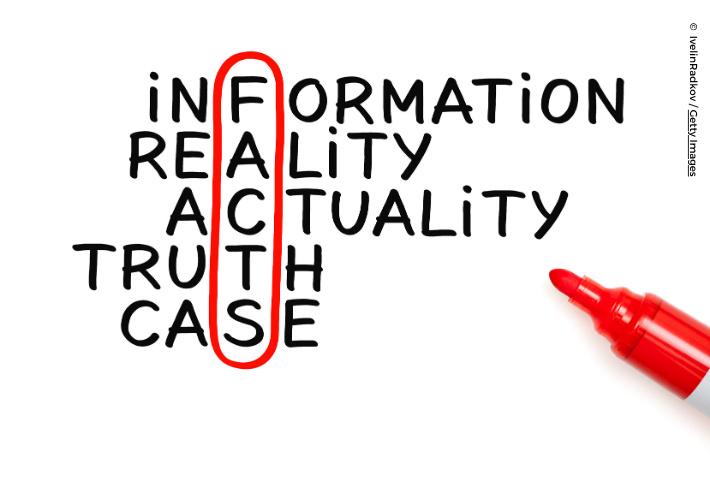By Saba Chaudhry
Media should play an important role during conflicts, but the recent India and Pakistan clashes illustrate how media can undermine journalistic integrity.
In early May 2025, the two nuclear powers exchanged air strikes and cross-border fire after a terror attack in Indian-administered Kashmir. Within hours, a flood of fake news surfaced on the nights of the 8th and 9th of May, misleading the public and spreading panic across the borders of India and Pakistan. The spread on social media of conspiracy theories, unverified information, and doctored videos and images did not just create fear but also raised serious questions globally about the critical role of media in conflict.

A wave of disinformation
Some of the examples of the media promoting false narratives include a video which was falsely suggested to show India striking Pakistan. The same video was first reported by the media in October 2023, showing Israeli attacks on Gaza. Fact-checkers from India and Pakistan said that, surprisingly, most of the mainstream TV news channels aired the old footage from Gaza. Similarly, several TV news channels in India ran a story about the Indian Navy attacking Karachi. ‘’The terms Karachi and Karachi port began to trend on X and images appeared on social media of dark clouds over the city caused by the explosions.” The traditional media reportedly highlighted sensationalised videos without any fact-checking.
The rise of AI and digitally fabricated videos also influenced coverage. ‘’One AI-generated fake claimed to show Rawalpindi Stadium in northern Pakistan reduced to rubble after an attack, racking up millions of views ‘’.
Bans affected coverage
Several independent media channels, YouTube and X accounts of journalists were shut down during the conflict, hindering their ability to report on the conflict.
‘’The ban significantly disrupted my ability to provide unbiased information to a wider audience, particularly the 20% of my viewership said Digital Rights Foundation journalist Asma Sherazi. She described the ban as “an attempt to stop ethical journalism” and encouraged self-censorship.
Conflicts are when responsible journalism is most needed, but when journalists ignore the facts or face restrictions, the impact is far-reaching. Millions of people are misled by false reporting and exaggerated news, fueling uncertainty in an already tense environment where some people believe everything they read or see.
Role of Traditional Media
As more time passed in the conflict, the more it became hard to distinguish between fake news and propaganda fueling mass anxiety; still, some journalists played an important role in debunking hoaxes.
Alishba Asif, a journalist who was working in the Channel 24 newsroom during the conflict, told Media Diversity Institute: ‘’During the conflict, we tried to rely more and more on government official sources, because constant misinformation was circulating across social media platforms and even in professional WhatsApp news groups. In such chaotic times, even a minor incident such as a cylinder blast and fire was misinterpreted and reported as drone attacks.”
She said the newsroom would repeatedly ask government sources for information to understand what was happening and gain a clear understanding of the situation.
“Our first and biggest priority was to verify whether every piece of information we received was accurate before we shared it with the public. In such a panic situation, we made sure to avoid sensationalism and exaggeration and only focused on facts.”
Asif added: “We just wanted to give the public clarity, and by reporting through fact-checking, we also tried to do more than just inform people; we also sought to counter fear and confusion. In a time of conflict, accurate reporting becomes a tool not only for awareness but also for reassurance. The more people consume truth and balanced reporting, the more they feel calm in times of panic.
“Following the ceasefire, we also tried to highlight the positive side, the relief, the joy on the faces of people, especially children. For many in the younger generation who have grown up in the age of digital media, this was their first experience of conflict and intense media coverage. The psychological impact is also undeniable because every story, every news, every highlight leaves a mark.’’
Fact-checking as a tool for peace
Sneha, a researcher and fact checker working for a think tank, said, ” If journalists report without verifying anything during a conflict, it can escalate to violence. Conflict reporting is the most sensitive reporting as people who are reading you or watching can form their opinion while trusting your reports. I think during clashes when journalists are reporting, they should check every claim, every single line, every report and confirm it from multiple sources before sharing with the public.
“Videos, images, data and everything can be manipulated and do a bigger harm than information. Just because a video has millions of shares and likes on the internet does not mean it is true. So, it is the responsibility of journalists to get their facts right.”
Sneha stressed that fact-checking plays an important part in peace and is vital in the age of AI.
